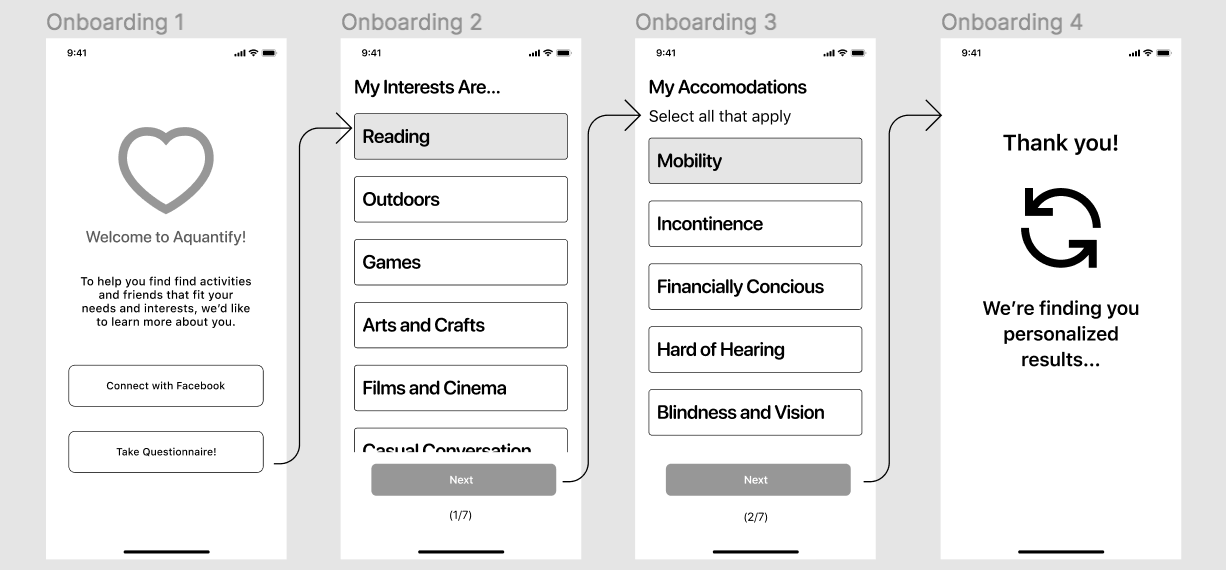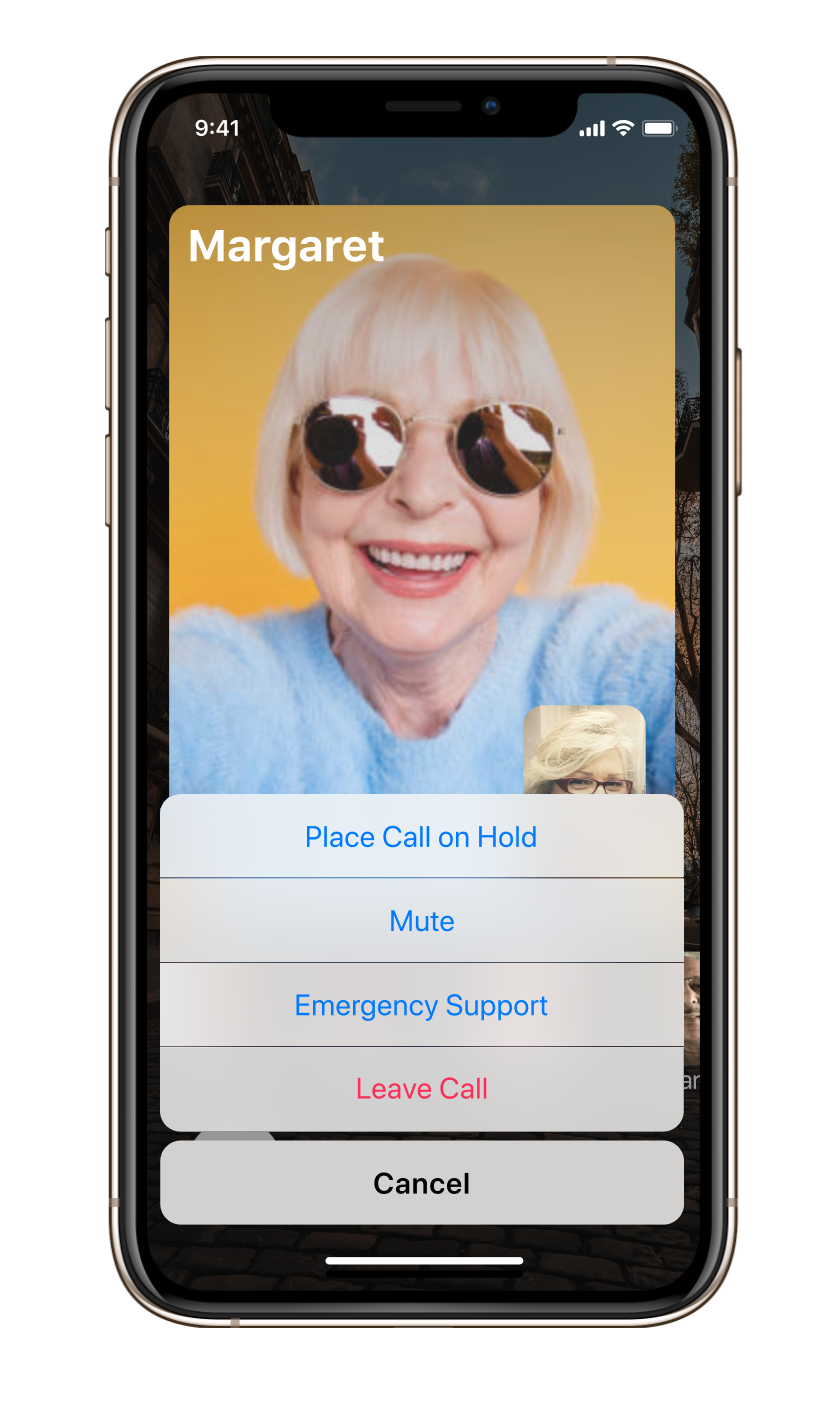Context: Product Design Challenge
Role: Product Designer
Duration: Five Hours.
Design Challenge Prompt
Many seniors in today’s society face loneliness and social isolation.
Design a platform that either a) matches seniors with other individuals to form meaningful relationships, or b) allows seniors to find and participate in an activity with people of similar interests.
Impact and Opportunity
In 2018, 52.3 million elderly residents lived in the the United States.
However, studies show that seniors are becoming increasingly lonely despite the ever-growing population and density of elderly residents. Beyond this phenomenon being inherently problematic, studies by UCSF show that Americans who are 60 and older who reported feelings of loneliness saw significant declines in their physical and mental health.
I believe that by creating a digital solution that addresses their social isolation, we have an opportunity to improve both the quality and longevity of life for the elderly.
The People Problem
In trying to understand the root cause of the problem, I discovered through my research that senior loneliness typically derives from friends and family moving or passing away.
The emotional support networks that seniors rely on can drastically change—causing feelings of isolation, abandonment and loneliness.
Understanding our Target User
These are some of the characteristics of our target user that I realized are important constraints in designing our solution.
Half of all older adults had less than $24,224 in yearly income from all sources, thus our solution will entail designing primarily for middle and lower classes.
Likely to be retired, not working
Our users may have rigid reschedules around home-care, meal deliveries, doctors appointments and food.
Able-Bodied vs Non Able-Bodied
I'd also like to divide our target audience into two groups.
Those who are able bodied and able to actively participate in activities.
And those who are non able-bodied, who have limitations in mobility.
While our audience may have similar desires to feel less lonely, these two types of users may have different needs that our solution should accommodate.
Attitudes and Feelings
After some quick google searches on senior loneliness, these are some of the attitudes I found that seniors might have regarding their social isolation.
Not worth the effort to go out of their way to find new people to connect with since logistics and event-planning and finding require active research.
Feelings of shame and embarrassment around meeting new people due to deteriorating health.
Feeling like it may be difficult to find other elders with similar interests.
Mission Statement
Based directly upon these attitudes outlined above, I decided to jot down three points that will serve as my mission statement in solving the problem.
Our solution needs to:
Make it easy for seniors to find events that accommodate their disabilities and needs
Provide a platform that allows seniors to tend to their needs while interacting with others.
Provide a diverse set of options that allow users to connect with people of similar interests.
Solving the Problem
With this mission statement in mind, I decided to opt for the second solution that the prompt offered—an application that “allows seniors to find and participate in an activity with people of similar interests”
I wanted to opt for a solution that presents events for seniors to take place both in real life and digitally. This is because a digital gathering space might be more accommodating for seniors who have limitations and anxieties about leaving home to meet with others.
I didn’t pursue the “matching” feature in the prompt because I figured that the “matching” feature might make seniors feel more lonely in the long term.
With this general solution in mind, I sketched out some preliminary screens:
(I apologize for the messyness, I was a bit nervous!)
One quick opportunity I thought about would be the option to log-in and connect with a Facebook account, since my research revealed that a large percentage of the elderly population uses Facebook. Connecting with facebook allows for a few things:
My application could pull data from the users profile to know more about the users interests, demographic, location and more.
In the reverse, Facebook could also use the data from our application to learn more about events seniors would be interested in— the selling of this data could potentially generate revenue.
The application would allow for sharing of real-life and digital events on facebook, which would allow for more aggressive growth in the user base.
After some sketches, I began wireframing the basic components.
Onboarding
Aside from interests and general accommodations, the app would ask for times that work best for our users and would also ask about an upper-limit to the price point of certain events.
The last screen pictured above would include an animation that looks like app is thinking—since an instantaneous result from the survey may make the user feel like the work they put in for the survey was ignored or brushed aside. The loading screen allows for the user to feel like their information is actually being processed, understood and cared for.
Active Feed
After submitting the survey, events would pop up based upon the their preferences.
For interests, the survey is less of a filter, but helps to rank which events are most relevant, so that all feasible events, though slightly outside of their interest, can appear. It’s fun to try new things sometimes.
For necessary accommodations, the app would only display events that our users are able to attend. For example, if a senior citizens indicates that they have significant mobility issues, a vast majority of the events listed would be a digital event space so users can attend without worrying about accommodations. I imagined that it’d be demoralizing to excitedly find an event to attend, only for the event to not be accessible to a user’s needs.
I also decided to incorporate an app store integration in case any digital resources can be used as a part of a digital activity/event.
Attending a Digital Event
Once the digital event is about to occur, our users are notified via touch notification and can join in on a digital call where anything from a digital book club, knitting session or genuine discussion can take place.
On the rightmost screen above, users can place the call on hold or mute in case something sudden arises. Users can also contact emergency support in the case of a medical emergency.
For real life events, the specific event details would look more similar to a typical events page that one would find on facebook or eventbrite.
I prioritized less time on the real-life events finder since these types of pages are more common throughout the web.
High Fidelity Screens
Metrics:
In terms of how I would measure the application to be successful, I would use the following.
Growth rate of the total number of users actively using the application
Growth rate in the number of events attended, either real life or digital, that the average user attends.
Retention in the user returning to our application after initial use. The longer users use the application, the better.
Next Steps:
Aside from the basic steps necessary to validate the assumptions I presented, I'd also like to see if our app can integrate with sites such as meet-up.com and eventbrite to present additional options for events.
I would also like to flesh out how to incorporate events that would use an additional screen, such as collective movie screenings or TV watching sessions while the videochat occurs.
~~~
Thanks for reading!








